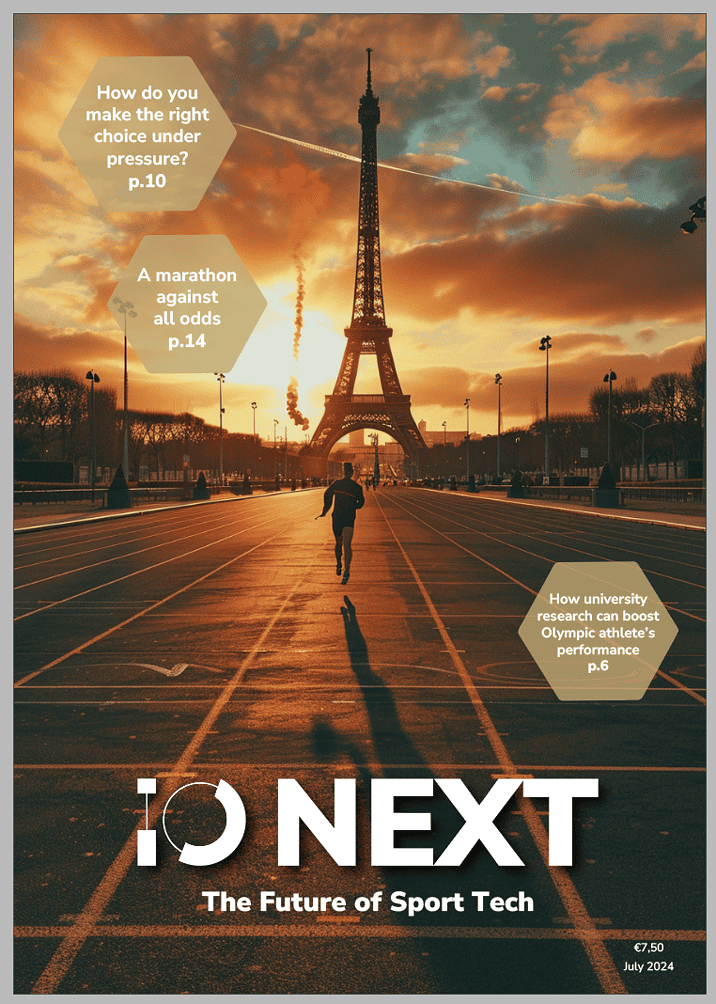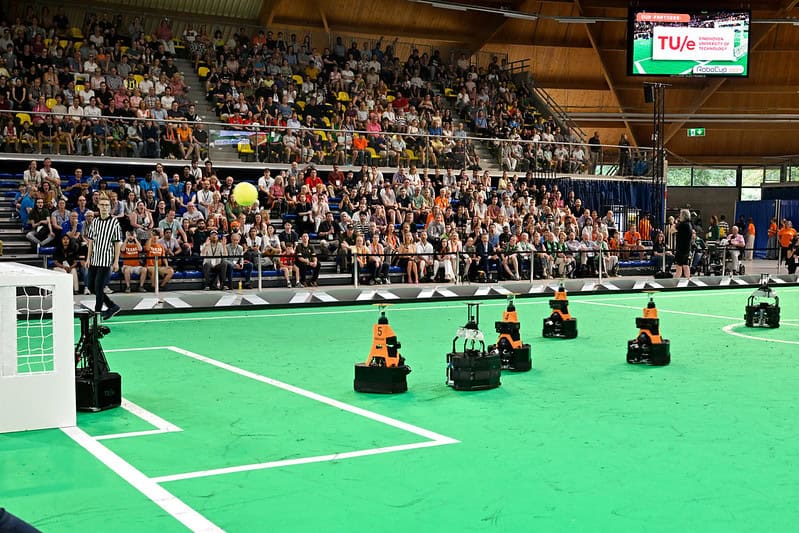
The most important sporting event in the world can’t happen without top-notch technology. Across the decades, top sports events have become one of the most prestigious benchmarks for testing innovation. Every edition of the modern Summer Olympics saw many firsts, even technology-wise, and each provides a snapshot of the technological development of the period. As Paris 2024 is already called the AI edition, let’s take a trip down memory lane and look back on some of the innovations that changed the Olympics.
Los Angeles 1932: the chronograph
Before the 1932 Olympics, each judge used to bring one’s own stopwatch to keep track of time during races. It wasn’t until this Olympics edition that Swiss watchmaker Omega developed its Olympic chronograph. The chronograph featured a fly-back hand, allowing each judge to rely on the same tool to track time with accurate precision for the time. Since then, the Swiss company has become the official timekeeper of most of the Olympic games, advancing its tech edition by edition.
Rome 1960: the first edition to be broadcast live
The 14th occurrence of the modern Olympic Games was the first broadcast live across Europe, with Eurovision providing coverage throughout the continent. Since TV satellites would have come only two years later, taped footage of the games was flown to North America at the end of each competition day. CBS had the exclusive rights to broadcast games in the United States, while CBC Television cast the Olympics in Canada and Telesistema Mexicano did the same in Mexico– also for the first time.
There’s something about sport. And so here is a magazine full of technology and sport for you. For ‘IO Next: The Future of Sport Tech’ our team delved into innovations for professionals and amateur athletes.

Tokyo 1964: satellite scoring and timing accuracy
Tokyo 1964 was defined as “a science fiction edition,” given the many technological advancements introduced. Following up on the previous edition’s first broadcasts, Tokyo 1964 saw the world’s first global broadcast thanks to a collaboration between NASA and the Japanese government. This edition also brought relevant advances in timing and scoring technologies. Specifically, it was the first time computers were used to record statistics, which allowed showing athletes’ times on TV screens.
Furthermore, Japanese watchmaker Seiko featured as the official timekeeper, linking the starting gun with a photo-finish camera and a quartz clock. This allowed recording results down to 1/100th of a second, an unprecedented accuracy for the time. The quartz revolution was about to disrupt the watch industry as a whole, with brands that, in the following decade, would have started mass commercializing wristwatches featuring this technology.

Mexico 1968: synthetic all-weather tracks
This edition was the first one to feature an artificial all-weather athletics track. The synthetic track replaced cinder running tracks, helping athletes improve their running performance. In fact, the synthetic running surface—combined with Mexico City’s high altitude—contributed to setting nine world Olympic records in men’s sprint, relay, and middle distance events and five in women’s sprint. Since then, synthetic tracks have become the new standard.
Sidney 2000: advanced anti-doping tests
Before the Sidney Games, the International Olympic Committee (IOC) and the World Anti-Doping Agency (WADA) conducted the first out-of-competition drug tests. This collaboration resulted in over 2,000 tests across 27 sports, with out-of-competition tests becoming commonplace after these games. Most importantly, this edition of the Olympics marked the introduction of testing for erythropoietin (EPO), one of the most common performance-enhancing drugs. During the Olympics, 307 tests were conducted, making Sidney 200 the first time in the history of the games that blood samples had been taken from athletes to test for doping.
London 2012: the first prosthetic-legged athlete
A further example of how the Olympics showcase technological progress benefitting society at large is Oscar Pistorius, who was the first amputee athlete to compete at the games. The South African runner took part in the 400-meter and 4 x 400-meter relay races, proving the reliability of prostheses even when competing against the very best athletes. At the same time, his case cast some doubt on the fairness of the prostheses use. An amputee athlete doesn’t have the same body weight as a non-amputee and doesn’t suffer from lactic acid buildup or muscle fatigue as much.
Rio 2016: virtual reality and streaming quality
Building upon the advancements in broadcasting quality, the Brazilian Olympic Games were the first to feature virtual reality (VR). Back then, both the American NBCUniversal and BBC provided hours of VR footage to their audience with VR headsets. In addition, this Olympics saw the mass introduction of drones to film events and Ultra HD (4K) and Super High-Vision (8K), although only 130 hours of footage were recorded.


